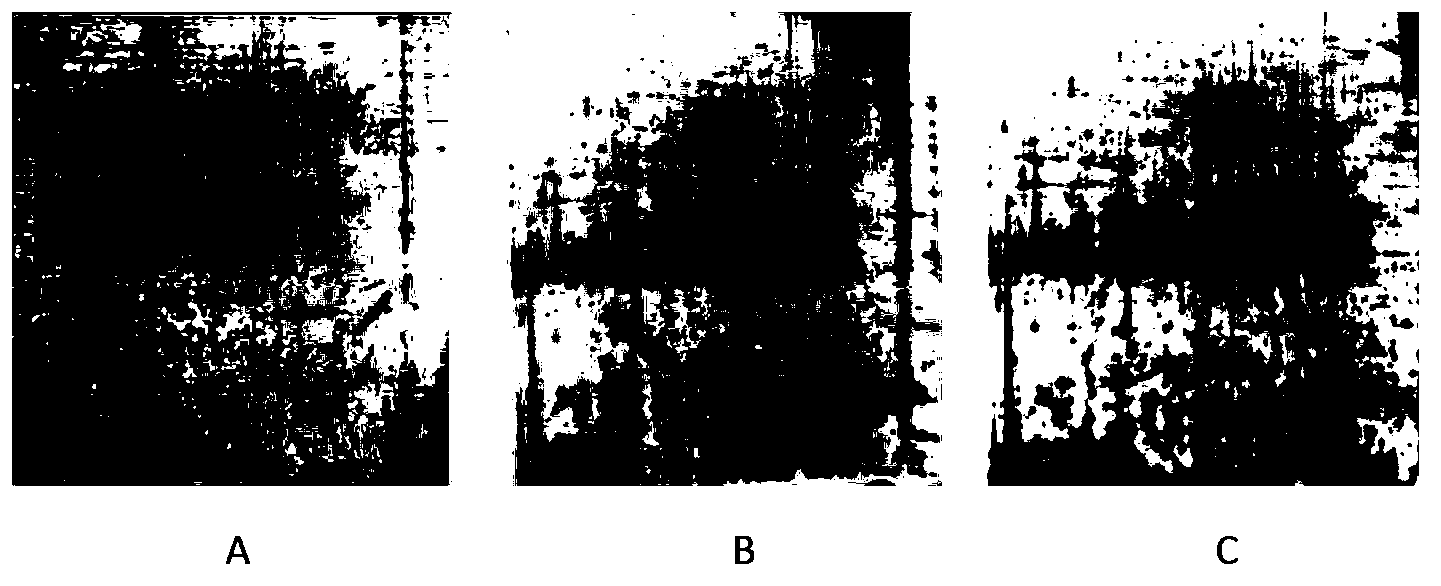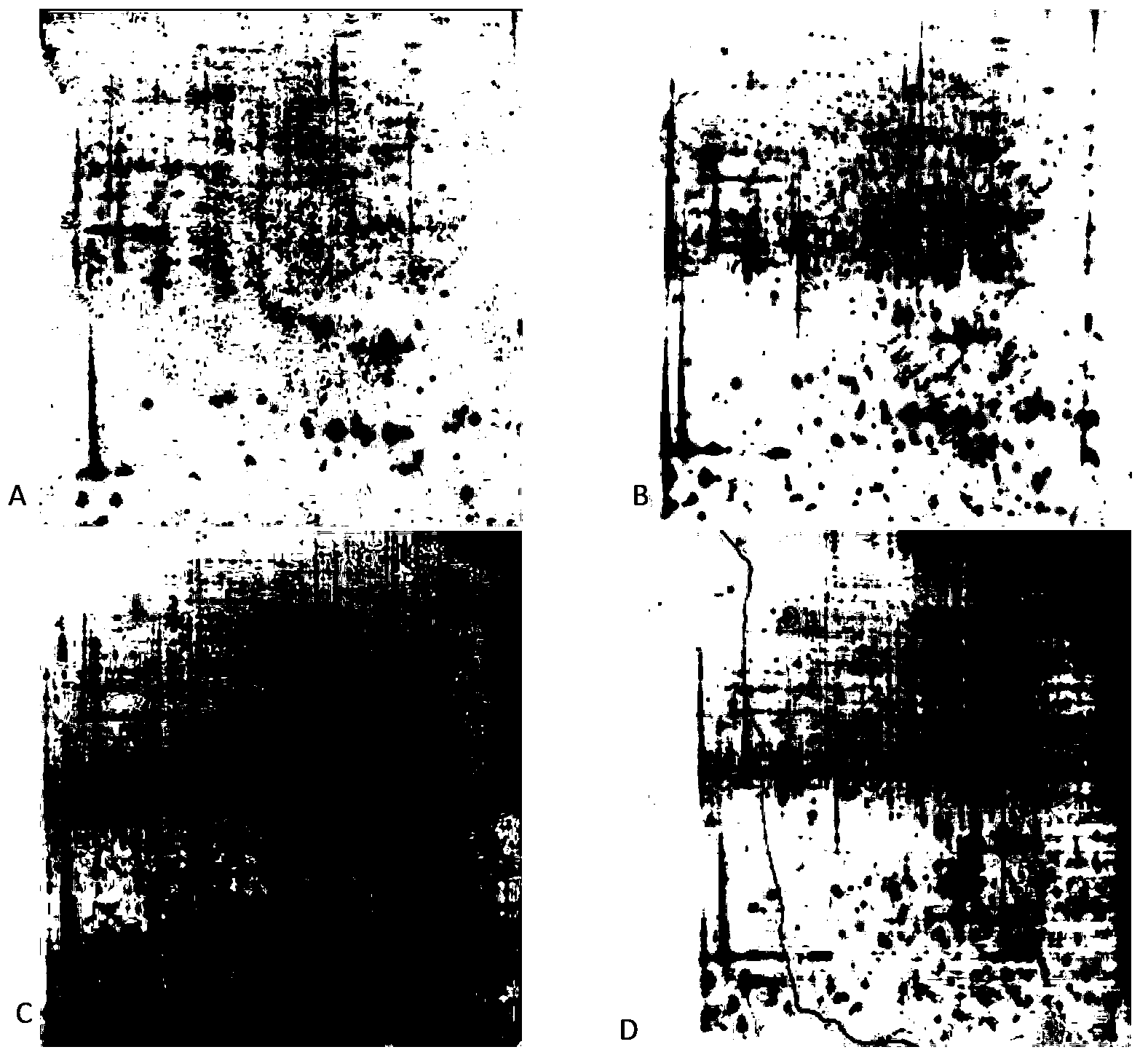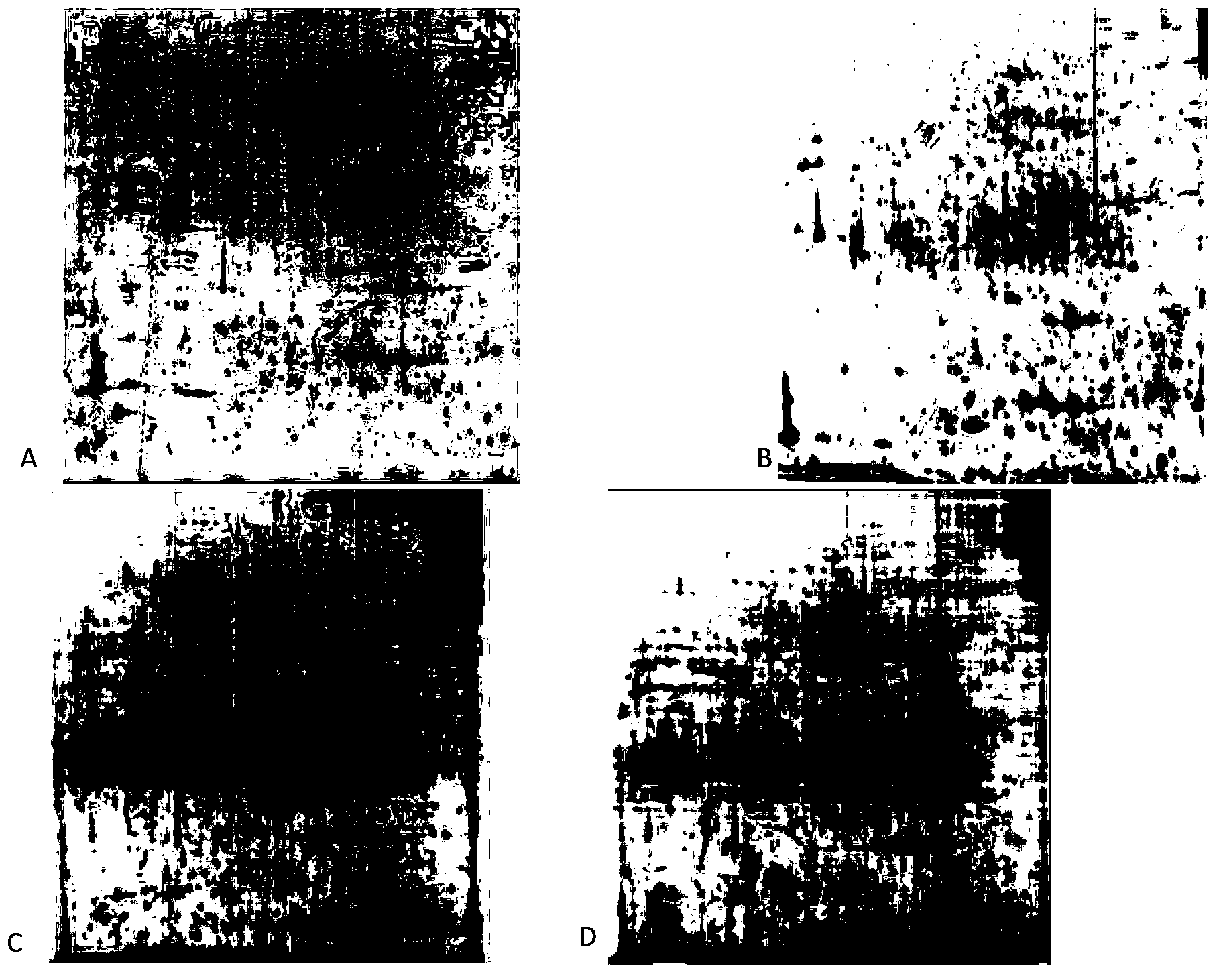Method for extracting protein from cotton leaves
An extraction method and protein technology, applied in the field of biochemistry, can solve problems affecting protein purity, affecting the development of cotton industry, affecting the research of cotton protein field, etc., and achieve the effect of good repeatability, stable protein and high protein purity
- Summary
- Abstract
- Description
- Claims
- Application Information
AI Technical Summary
Problems solved by technology
Method used
Image
Examples
Embodiment 1
[0026] Embodiment 1 Cotton leaf obtains
[0027] Select cotton seeds with full grains and clean fluff, put them into a triangular flask, soak the seeds for 24 hours, and transfer them to a germination box with two layers of filter paper after the seeds are white, and keep the germination box moist until two cotyledons grow. Finally, the vigorous and uniform cotton seedlings were selected and transferred to 1 / 2 Hoagland culture medium, and hydrocultured in an artificial climate chamber. The culture conditions are as follows: temperature is 28 / 25C (day / night), light intensity is above 12000 lx, light is 350-400, light is 10 hours a day, and relative humidity is 60-80%. Change the culture medium every 4 days, and pay attention to cleaning the moss on the roots and pots, etc. After cultivating for half a month, take the leaves, wash them with pure water and deionized water in turn, dry the water with filter paper, and put them in liquid nitrogen After quick-freezing, store in a -...
Embodiment 2
[0029] Example 2 Cotton leaf protein extraction
[0030] Burn the cleaned mortar with an alcohol lamp for three minutes, put it in a -20°C refrigerator for pre-cooling, add 1-2g of materials, an appropriate amount of PVPP and a little quartz sand, and grind thoroughly with liquid nitrogen until the powder turns white. Transfer to several 2mL centrifuge tubes (about 0.4g per tube), add 1.8mL pre-cooled trichloroacetic acid extract to each tube, mix well, put in -20°C refrigerator for more than two hours, and leave for about half an hour Shake once. Centrifuge at 13000r / min for 15min at 4°C, discard the supernatant, and collect the precipitate. After crushing the precipitate with a pipette tip, add 1.8mL of -20°C pre-cooled acetone (containing 0.07%-0.1%DTT, 1mmol / LPMSF), mix well and let stand at -20°C for 2-4h. Centrifuge as above, discard Take the supernatant, and take the precipitate, and repeat the washing 3 times. Finally, take the precipitate, if you find that there is...
Embodiment 3
[0039] Extracted protein leaf protein purity detection of embodiment 3
[0040] Detection method:
[0041] 1. Protein Quantification
[0042] Use 1% BAS (Bovine Serum Albumin) as standard protein, 0.01% Coomassie Brilliant Blue G250, 5% ethanol (concentration: 95%), 10% phosphoric acid staining, measure the OD value at a wavelength of 595nm on a UV spectrophotometer and draw standard curve line. Calculate the protein concentration of the sample according to the standard curve.
[0043] 2. Hydration
[0044]After thawing the protein sample placed in an ultra-low temperature refrigerator at room temperature, add hydration buffer (7mol / L urea, 2mol / L thiourea, 4% CHAPS, 80mmol / LDTT, 1mmol / LPMSF, 0.3% carrier to the centrifuge tube Ampholyte (PH4-7), mass fraction 0.002% bromophenol blue). In this experiment, IPG strips with pH 3-10 were used to separate the total protein of cotton leaves, and it was found that the protein spots were mainly concentrated between pH 5-8 (resu...
PUM
 Login to View More
Login to View More Abstract
Description
Claims
Application Information
 Login to View More
Login to View More - R&D
- Intellectual Property
- Life Sciences
- Materials
- Tech Scout
- Unparalleled Data Quality
- Higher Quality Content
- 60% Fewer Hallucinations
Browse by: Latest US Patents, China's latest patents, Technical Efficacy Thesaurus, Application Domain, Technology Topic, Popular Technical Reports.
© 2025 PatSnap. All rights reserved.Legal|Privacy policy|Modern Slavery Act Transparency Statement|Sitemap|About US| Contact US: help@patsnap.com



